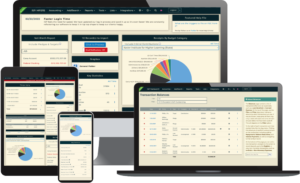The Combine Duplicates page allows you to view potential duplicates in your database using various search criteria. You can then determine whether you want to combine them, as well as customize what data is merged, or determine if the two records listed are not duplicates.
Under the Tools tab, select Combine Duplicates. To start, choose which method you’re going to use to find potential duplicates. Your method sets the way the system looks for record matches. Click the Change Method button at the bottom of the screen.
How do I change the method to search for potential duplicates?
The Change Method button will open a new window where you choose various pieces of data to locate duplicates.
Entity Type: This drop down menu determines which record type the system will be combing through. Your options are All, Individual, or Organizations.
Name Match: When the system matches by name, you can have it search using different levels of strictness. These levels are A+, A, B, and C. Each level determines just how broad the system looks for duplicates. The A+ level will be much more strict than the C level. You’ll also see with each level, a small description will appear below the dropdown and explain what the level is looking for.
Please keep in mind Prefixes and Suffixes when expecting results, as these can come into play when determining potential duplicates.
Contact Information: This dropdown determines which piece of contact information to couple with the Name Match. This allows you to search by Name or Address or other items such as Occupation or Employer or Email Address.
In this window you’ll also have the options of limiting results to only records that contain transactions, as well as excluding any entities previously marked as not a duplicate.
Once you’ve determined your search methods, click the Update button. The system will then conduct the search for potential duplicates and display them on the screen.
When your results appear, you will see three columns: Record, Potential Duplicate, and Options. The Record and Potential Duplicate columns will display what the system found, both the record and the other record it has deemed a possible duplicate.
The system will not combine duplicates when both records have candidate information. This is because the system has no way of knowing what candidate information to keep.
What options do I have when combining duplicates?
The Options column provides three different options: Combine, Not a Duplicate, and Customize. The Combine button will simply combine the two records and the Not a Duplicate button will mark the Potential Duplicate record as not a duplicate and it will no longer appear in search results if you select to not display them.
Customize: The Customize option allows you to both add and determine the data you want to show in that record, as well as choosing which data points are Primary. If the Record and Potential Duplicate have different data points for Email, Phone, and Mailing/Reporting Addresses, you’ll have the option of determining which remain the Primary choice when the records are combined into one.
What is Universal Geographic ID?
ISP automatically uses a geographic database to assign Universal Geographic IDs to your addresses. This is an ongoing background job. Using the Universal Geographic ID searches will allow you to match people even if the address is entered in different formats.
Where did the Combine All button go?
If you have a large list of results, it can be time consuming to combine duplicates one at a time. At the bottom of the screen you may see a Combine All button. We definitely urge you to use some caution when using this button but it will allow you to combine the results in one fell swoop.
There may be times, however, where you don’t see the Combine All button. Currently Combine All will be available for A and A+ matches with concrete contact information such as Email, Phone, or Address. The Combine All option is not available for lower level search options as this leaves too much room for error.
Is there another way to combine duplicates?






